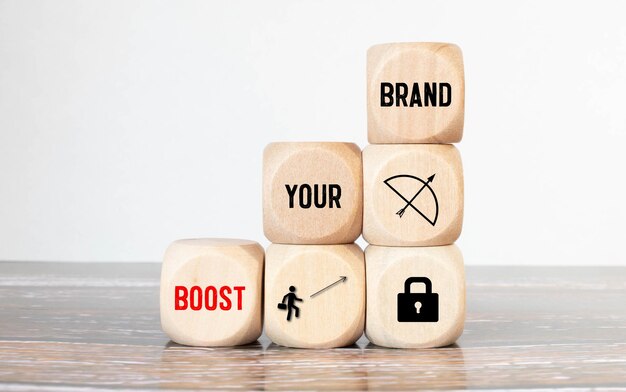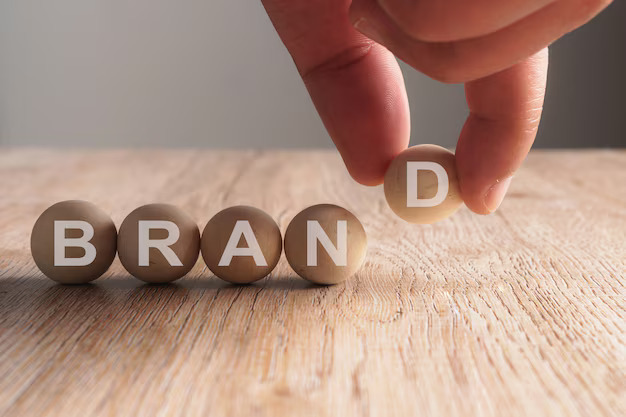
Have you ever been drawn to a product or service just because of how it looks or feels? Maybe you recognized a brand instantly, even without seeing its name. That’s the power of brand design. Picture yourself walking through a store and suddenly noticing a product. What caught your eye? Was it the sleek logo, the vibrant colors, or the overall look? This isn’t random; it’s the result of thoughtful brand design.
In today’s competitive market, having a strong brand design is essential. It’s not just about visuals; it’s the face of your company. It’s your first impression of customers and critical to building long-term loyalty.
This blog will dive into brand design. We’ll explore what it is, why it matters for your business, and how it shapes consumer perceptions and behaviors. By the end, you’ll understand the critical elements of effective brand design and how they work together to create a memorable brand identity.
Whether starting a new business or refreshing an existing one, this guide will give you the insights you need to use brand design to your advantage.
Definition of Brand Design
Brand design is the procedure of devising a visual identity for a brand. It is an act of embodying the brand identity, personality, and values. Brand design encompasses all the vital elements of the brand. It defines the look and see of the brand.
It encapsulates all the brand’s visual elements, including fonts, color, imagery, and graphics. However, it is fundamental that these elements must align with the core values and identity of the brand.
Brand design goes beyond the visual makeup of the brand. It translates the emotional and psychological impact on the customer. Brand design also manipulates the customer’s perception and affects the buyer’s decision.
By incorporating the right brand design across various touchpoints, the brand effectively builds trust and loyalty.
Key Elements of Branding Designs

Every successful company has strong roots in branding. These essential elements help the brand further enhance its position.
Logo Design
The logo is the face of the brand. It symbolizes the brand’s identity and the first thing people associate with it. A good logo is simple, nongeneric, memorable, and embodies the brand’s values and mission. It is a medium to convey brand essence and distinguish brands from peers.
Color Palette
Each color evokes different emotions and impressions. By using the correct combination, the brand can create a powerful impact on the audience. Colors can also invoke relatability, trust, and comfort. In the long run, these emotions imprint on an emotional print in customers’ cognition. That memory makes customers instantly remember your brand and associate with it.
Typography
Similar to colors, typography also impacts the visual harmony of the brand. Different fonts evoke different emotions and set different tones. By using a combination of fonts, the brand can enhance readability. Good typography helps create a cohesive look and feel across all your brand’s communications.
Imagery and Visual Style
The imagery and visual style used in the brand design should resonate with the targeted audience and reflect the brand’s values. Whether it’s photography, iconography, or illustration, the imagery should align with the brand’s overall aesthetics. It helps to create a strong and unified brand identity.
Furthermore, the tone and voice should align with brand identity. It helps to promote a cohesive brand experience.
The Role of Brand Design in Business
Brand design plays a significant role in overall branding. This section will discuss the role of brand design for branding.
Increase Brand Recognition
A brand with a cohesive identity, memorable logo, consistent colors, and typography has a better chance of being memorable. Unique personality across all touch points will instantly make the brand recognized.
Building Brand Identity
Brand design is often the first moment of contact a consumer has with your brand. A strong, well-designed brand identity distinguishes your brand from competitors and makes it stand out in a competitive market.
Creating Emotional Connections
Effective brand design goes beyond aesthetics. It initiates an emotional bond with the audience. This emotional bond fosters brand loyalty, encouraging consumers to choose your brand over others.
Influence on Consumer Behavior
Brand design is a contributing factor in the consumer decision-making process. It can influence consumers’ perceptions of products or services. A professional, consistent brand design builds trust and credibility. It helps the consumers to choose your brand.
Increase Business Value
Brand design is a future investment for your brand. With the help of brand design, creating a strong, established brand becomes easy, as it creates a specific image in the customer’s mind. Brand design is a powerful long-term investment that can significantly elevate your brand’s market value.
A well-crafted brand design not only helps establish a strong, recognizable identity but also creates a lasting impression in consumers’ minds. This perception of reliability and professionalism can increase customer loyalty and brand equity.
Over time, a consistent and impactful brand design can make your brand more competitive, allowing it to command premium pricing and attract quality partnerships. It drives overall business growth. By fostering trust and recognition, your brand design becomes a critical asset in boosting your company’s value in the marketplace.
The Process of Developing a Brand Design

Prior to the design process, it’s crucial to understand the audience and brand position. Market research helps the brand easily determine its audience and values. The research also helps to make informed decisions in brand design. Aligning your market position and audience ensures the brand resonates with its true identity.
A clear understanding of brand strategies and audiences helps the brand convey values, missions, and goals. The process of design development is iterative because it involves feedback and revisions. However, it also helps refine the design until it embodies the brand identity.
Once your design is finalized, it’s time to implement it across all touchpoints. Consistent use on the website, social media, advertising, and packaging will ensure uniformity and make the brand more recognizable and adaptable.
Conclusion
Staying current with brand design trends is vital for keeping your brand relevant. Minimalist designs with clean lines and simple colors appeal to those who value transparency and simplicity. Bold colors and gradients make your brand stand out in a crowded digital world, while responsive design ensures your brand looks great on any device. Additionally, embracing eco-friendly and sustainable design reflects your brand’s environmental commitment.
Brand design is more than aesthetics; it conveys your brand’s values and identity effectively. Vince understands the importance of staying ahead in the dynamic world of brand design. Contact us now to elevate your brand, ensuring your design aligns with the latest trends and resonates deeply with your audience.
Explore More:

Vince Logo Design is a distinguished digital marketing agency, specializing in crafting compelling brand identities and optimizing online presence. We are your partners in creating impactful digital strategies that drive results.
Get in touch.Articles
- Top 10 SEO Benefits of Responsive Web Design in 2025
- 8 Best CMS for Small Business in 2025: Pick the Popular
- 5 Best Hosting for Small Business Websites
- Affordable WordPress Website Design: Best Service Provider
- Custom Design Vs Template Website: Which One Is Best?
- Fix My WordPress Site: WSOD, Redirect & Site Maintenance
Get Free Consultancy
Fill the following form and receive a guaranteed response within 48 hours.
We have worked with world's leading brands











